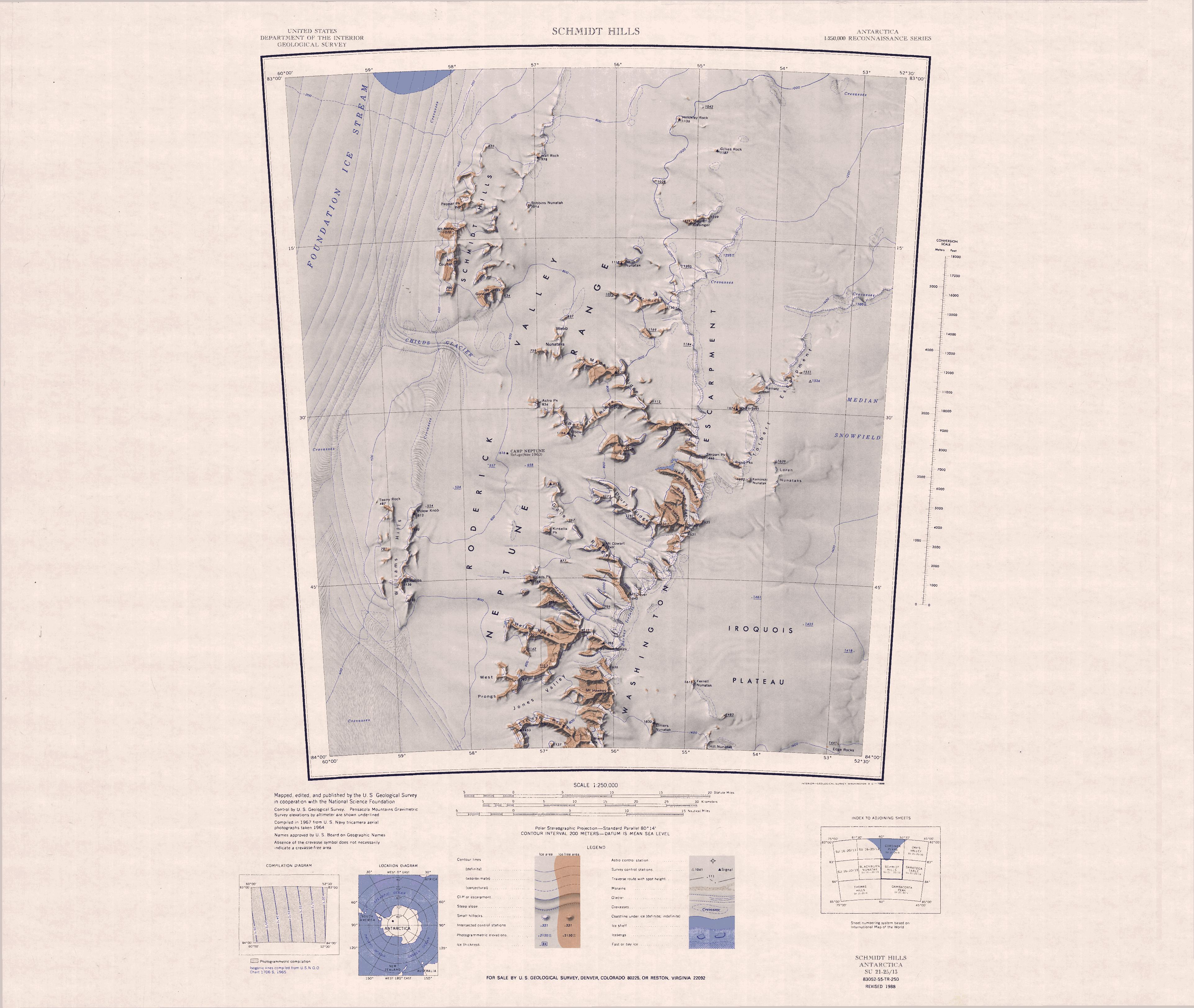Meads Peak on:
[Wikipedia]
[Google]
[Amazon]
Mount Hawkes () is, at , the highest mountain along the Washington Escarpment, standing at the east side of Jones Valley in the Neptune Range of the
 Mount Hawkes is towards the south of the Washington Escarpment, which runs from south to north through the length of the Neptune Range.
The Jones Valley is to its west and the Iroquois Plateau is to its east.
Gambacorta Peak is to the south and Bennett Spires is to the north.
Ridges extending west from Bennett Spires include the West Prongs, Heiser Ridge and Hudson Ridge, which terminates in Meads Peak.
Mount Hawkes is towards the south of the Washington Escarpment, which runs from south to north through the length of the Neptune Range.
The Jones Valley is to its west and the Iroquois Plateau is to its east.
Gambacorta Peak is to the south and Bennett Spires is to the north.
Ridges extending west from Bennett Spires include the West Prongs, Heiser Ridge and Hudson Ridge, which terminates in Meads Peak.
Pensacola Mountains
The Pensacola Mountains () are a large group of mountain ranges and peaks that extend in a northeast–southwest direction in the Transantarctic Mountains System, Queen Elizabeth Land region of Antarctica.
They comprise the Argentina Range, Forre ...
, Antarctica.
Discovery and name
Mount Hawkes was discovered and photographed on January 13, 1956, in the course of the trans-Antarctic nonstop plane flight by personnel of United States NavyOperation Deep Freeze
Operation Deep Freeze is the code name for a series of United States missions to Antarctica, beginning with "Operation Deep Freeze I" in 1955–56, followed by "Operation Deep Freeze II", "Operation Deep Freeze III", and so on. (There was an init ...
I from McMurdo Sound to the Weddell Sea
The Weddell Sea is part of the Southern Ocean and contains the Weddell Gyre. Its land boundaries are defined by the bay formed from the coasts of Coats Land and the Antarctic Peninsula. The easternmost point is Cape Norvegia at Princess Martha C ...
and return.
It was named by the United States Advisory Committee on Antarctic Names
The Advisory Committee on Antarctic Names (ACAN or US-ACAN) is an advisory committee of the United States Board on Geographic Names responsible for recommending commemorative names for features in Antarctica.
History
The committee was established ...
for Commander William M. Hawkes of the United States Navy
The United States Navy (USN) is the naval warfare, maritime military branch, service branch of the United States Department of Defense. It is the world's most powerful navy with the largest Displacement (ship), displacement, at 4.5 millio ...
, who was the co-pilot of the P2V-2N Neptune aircraft making this flight.
The Hawkes Heights are also named for Hawkes, who was assigned to Air Development Squadron Six ( VX-6) in 1955–56.
Location
 Mount Hawkes is towards the south of the Washington Escarpment, which runs from south to north through the length of the Neptune Range.
The Jones Valley is to its west and the Iroquois Plateau is to its east.
Gambacorta Peak is to the south and Bennett Spires is to the north.
Ridges extending west from Bennett Spires include the West Prongs, Heiser Ridge and Hudson Ridge, which terminates in Meads Peak.
Mount Hawkes is towards the south of the Washington Escarpment, which runs from south to north through the length of the Neptune Range.
The Jones Valley is to its west and the Iroquois Plateau is to its east.
Gambacorta Peak is to the south and Bennett Spires is to the north.
Ridges extending west from Bennett Spires include the West Prongs, Heiser Ridge and Hudson Ridge, which terminates in Meads Peak.
Nearby features
Jones Valley
. A snow-covered valley between West Prongs and Elliott Ridge. Mapped by USGS from surveys and United States Navy air photos, 1956-66. Named by US-ACAN for Lieutenant (j.g.) James G.L. Jones, United States Navy, a member of the Ellsworth Station winter party in 1958.Bennett Spires
. Two sharp peaks overlooking the head of Jones Valley. Mapped by USGS from surveys and United States Navy air photos, 1956-66. Named by US-ACAN for Staff Sergeant Robert E. Bennett,United States Air Force
The United States Air Force (USAF) is the Air force, air service branch of the United States Department of Defense. It is one of the six United States Armed Forces and one of the eight uniformed services of the United States. Tracing its ori ...
, radio operator of the Electronic Test Unit in the Pensacola Mountains, summer 1957-58.
West Prongs
. Three distinctive rock spurs that form the west end of the ridge just north of Elliott Ridge. Mapped by USGS from surveys and United States Navy air photos, 1956-66. Named by US-ACAN for Clyde E. West, cook at Ellsworth Station, winter 1958.Seely Ridge
. A ridge, long, rising to at the south end, trends northeast from West Prongs to join Heiser Ridge. Named by US-ACAN in 1995 after Benjamin W. Seely, who invented the inflatable life raft in 1915 at Pensacola Naval Air Station.Heiser Ridge
. A narrow rock ridge, long, midway between West Prongs and Hudson Ridge. Mapped by USGS from surveys and United States Navy air photos, 1956-66. Named by US-ACAN for James R. Heiser, topographic engineer with the Neptune Range field party, summer 1963-64.Hudson Ridge
. A narrow rock ridge long, lying north of Heiser Ridge. Mapped by USGS from surveys and United States Navy air photos, 1956-66. Named by US-ACAN for Peter M. Hudson, aviation machinist at Ellsworth Station, winter 1958.Meads Peak
. A peak, high, standing off the northwest end of Hudson Ridge. Mapped by USGS from surveys and United States Navy air photos, 1956-66. Named by US-ACAN for Edward C. Meads, construction driver at Ellsworth Station, winter 1958.References
Sources
* * * * {{DEFAULTSORT:Hawkes, Mount Mountains of Queen Elizabeth Land Pensacola Mountains